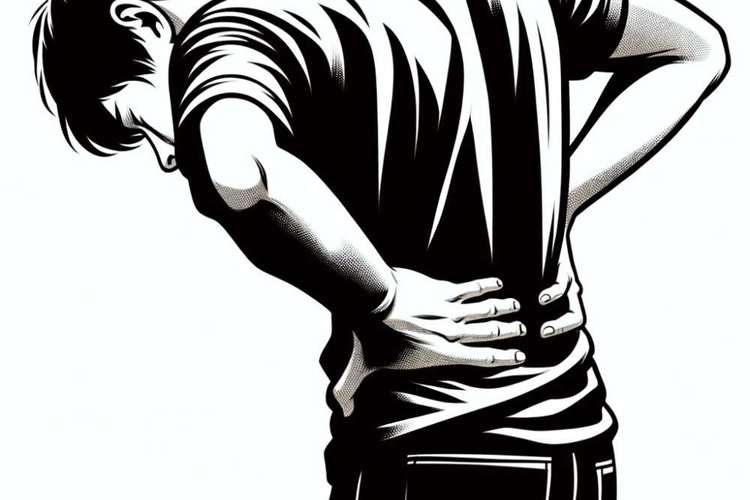What To Know About Osteoporosis and Lower Back Ache
Osteoporosis is a condition that affects bone density and strength, making bones more fragile and susceptible to fractures. While it can impact various parts of the body, the spine is particularly vulnerable. Lower back ache is often one of the first noticeable symptoms of osteoporosis, especially as the condition progresses. Understanding the connection between osteoporosis and lower back pain is crucial for early detection and management of this common bone disorder.

Osteoporosis is often called a silent disease because it progresses without noticeable symptoms until a fracture occurs. When it affects the spine, one of the earliest warning signs can be persistent lower back ache. Many people dismiss back pain as a normal part of aging or the result of poor posture, but when osteoporosis is the underlying cause, ignoring these symptoms can lead to serious complications, including vertebral compression fractures and loss of height.
What is Osteoporosis?
Osteoporosis is a medical condition characterized by decreased bone density and deterioration of bone tissue. This leads to increased bone fragility and a higher risk of fractures, especially in the hip, spine, and wrist. Bones naturally lose density as people age, but osteoporosis accelerates this process beyond normal levels. The disease affects both men and women, though postmenopausal women face the highest risk due to declining estrogen levels, which play a protective role in bone health. Risk factors include family history, low body weight, smoking, excessive alcohol consumption, certain medications, and insufficient calcium and vitamin D intake.
Understanding Osteoporosis and Its Impact on the Spine
The spine is particularly vulnerable to osteoporosis because it bears much of the body’s weight and consists of vertebrae that can become weak and porous. As bone density decreases, the vertebrae lose their structural integrity and may develop small fractures or collapse under normal stress. These vertebral compression fractures can occur from everyday activities like bending, lifting, or even coughing. When vertebrae collapse, they often cause the spine to curve forward, resulting in a hunched posture known as kyphosis. This spinal deformity not only affects appearance but also contributes to chronic pain, reduced lung capacity, and digestive issues due to compressed internal organs.
How Osteoporosis Causes Lower Back Ache
Lower back ache related to osteoporosis typically develops through several mechanisms. Vertebral compression fractures are the most direct cause, producing sudden, sharp pain that may worsen with standing or walking and improve when lying down. These fractures can also cause chronic, dull aching as the spine attempts to stabilize itself in a compromised position. Even without obvious fractures, weakened vertebrae can cause muscle strain as surrounding muscles work harder to support the unstable spine. The altered spinal alignment forces muscles and ligaments to compensate, leading to persistent discomfort. Additionally, nerve compression can occur when collapsed vertebrae narrow the spaces through which spinal nerves exit, resulting in radiating pain, numbness, or tingling in the legs.
Recognizing Symptoms Beyond Lower Back Ache
While lower back ache is a common symptom, osteoporosis presents other warning signs that should not be overlooked. Gradual height loss of an inch or more may indicate vertebral compression. A stooped posture or noticeable curve in the upper back suggests vertebral fractures have altered spinal structure. Fractures occurring with minimal trauma, such as breaking a bone from a minor fall or bump, are red flags for severely weakened bones. Some people experience sudden, severe back pain that limits movement and daily activities. Others notice that their clothes fit differently due to changes in posture and torso length. Recognizing these symptoms early allows for timely intervention and can prevent further bone loss and fractures.
Diagnosing Osteoporosis in Relation to Lower Back Pain
When lower back pain is suspected to be related to osteoporosis, healthcare professionals use several diagnostic approaches. A bone density test, specifically a dual-energy X-ray absorptiometry scan, measures bone mineral density and compares it to standard values to determine if osteoporosis is present. This painless test typically examines the hip and spine and is recommended for women over 65, men over 70, and younger individuals with risk factors. X-rays of the spine can reveal vertebral compression fractures and changes in bone structure. Blood tests may be ordered to check calcium and vitamin D levels, as well as to rule out other conditions that affect bone health. A thorough medical history and physical examination help identify risk factors and assess the severity of symptoms. In some cases, advanced imaging like MRI or CT scans may be necessary to evaluate fractures and nerve involvement more precisely.
This article is for informational purposes only and should not be considered medical advice. Please consult a qualified healthcare professional for personalized guidance and treatment.
Managing and Treating Osteoporosis-Related Back Pain
Once diagnosed, osteoporosis-related lower back ache requires a comprehensive treatment approach. Medications such as bisphosphonates, hormone therapy, and newer bone-building drugs can slow bone loss and reduce fracture risk. Calcium and vitamin D supplementation support bone health and are often recommended alongside dietary changes. Physical therapy and specific exercises strengthen muscles supporting the spine, improve balance, and reduce fall risk. Weight-bearing and resistance exercises are particularly beneficial. Pain management may include over-the-counter or prescription pain relievers, though long-term use should be monitored by a healthcare provider. In severe cases of vertebral compression fractures, minimally invasive procedures like vertebroplasty or kyphoplasty may be considered to stabilize the spine and relieve pain. Lifestyle modifications, including quitting smoking, limiting alcohol, and preventing falls through home safety measures, are essential components of long-term management.
Understanding the connection between osteoporosis and lower back ache empowers individuals to seek appropriate medical attention and take proactive steps to protect their bone health. Early diagnosis and comprehensive treatment can significantly improve quality of life, reduce pain, and prevent serious complications associated with this common but manageable condition.




